Installing Windows 10 on a Chromebook: A Detailed Guide


Intro
As the world of technology continues to evolve at breakneck speed, so too do our computing options. One area of interest is the installation of Windows 10 on Chromebooks, a venture that intrigues many tech enthusiasts and IT professionals alike. Chromebooks, typically lightweight and running on Chrome OS, have gained a solid foothold for their speed and simplicity. However, there’s a significant population that yearns for the expanded capabilities offered by Windows 10. This article dives into the heart of this topic, providing a detailed roadmap of the process, alongside the necessary considerations for hardware compatibility and software implications.
Navigating the Journey
Installing Windows 10 on a Chromebook isn’t just a walk in the park. It involves understanding the distinctive architecture of Chromebooks as well as their hardware limitations. As we lay out the specific requirements, potential pitfalls, and alternative operating systems worth considering, this guide stands as a beacon for those looking to bridge the gap between Chrome OS and Windows 10.
Without further ado, we venture into the hardwear aspects where we explore what makes a Chromebook tick.
Understanding Chromebooks
To grasp the complex process of installing Windows 10 on a Chromebook, it’s essential to first understand what Chromebooks are and what sets them apart in the landscape of computing devices. Unlike traditional laptops that run various operating systems, Chromebooks primarily operate on Chrome OS. This OS is heavily cloud-oriented, designed for speed and simplicity, favoring web applications over installed software. As a result, understanding the nuances of Chromebooks is crucial for anyone looking to navigate the waters of installation.
Chromebooks have gained popularity for their lightweight nature and ease of use. They can boot up in seconds, making them ideal for quick tasks. However, this speed comes with trade-offs, primarily in terms of the flexibility offered by their operating system. The implications of these characteristics will become increasingly important as we delve into methods of installation later in this article.
Characteristics of Chromebooks
Chromebooks are often characterized by several distinct features that align closely with their intended use-case:
- Cost-Effectiveness: Generally, Chromebooks are more affordable than traditional laptops. They provide a budget-friendly option for students or casual users.
- Simplicity: The interface is straightforward and user-friendly, primarily focused on web use. For those unaccustomed to extensive computing tasks, this is a significant draw.
- Automatic Updates: The operating system receives automatic updates, ensuring security and performance improvements without user intervention.
- Integration with Google Services: Seamless integration with Google Drive and other Cloud-based applications allows users to access their files from anywhere, a feature appreciated by many.
- Battery Life: Many models boast impressive battery life due to low power consumption, allowing for longer usage periods without a charge.
Despite these advantages, the distinctive architecture of Chromebooks does present limitations. They primarily rely on web-based applications, which can restrict the kinds of software typically run on Windows systems. This is crucial to note, as one prepares to transition from Chrome OS to Windows 10.
Operating System Overview
Chrome OS is not simply another operating system; it is a reflection of modern computing trends, emphasizing connectivity and simplicity. Its design architecture prioritizes web-based applications, creating an environment where the internet is the central hub for productivity.
Key aspects to consider about Chrome OS include:
- Lightweight Nature: The OS is tailored for performance on low-end hardware, meaning even less powerful devices can operate smoothly. This offers less strain on system resources and an overall quicker execution of tasks.
- Security Features: Security is built into the core of Chrome OS. With features like sandboxing and verified boot, the likelihood of encountering malware is significantly lower compared to traditional operating systems.
- Limited Software Options: Although web applications are plentiful, users can often run into walls when trying to access traditional desktop software, which is a significant reason for wanting to install Windows.
Understanding these specific elements is not just about knowing them; it teaches potential users about the real-world implications of choosing a Chromebook over a different device, especially when considering a transition to Windows 10.
As we further explore how to get Windows installed on these devices, knowing these foundational aspects will clarify why certain steps may be necessary and how they can be successfully executed. Through this knowledge, one can better navigate the intricacies of installation while managing expectations regarding performance and usability.
"An understanding of the limitations and strengths of your device can turn confusion into clarity."
Can You Install Windows on a Chromebook?
The prospect of installing Windows 10 on a Chromebook piques the interest of many tech aficionados and IT professionals. Chromebooks, with their lightweight design and cloud-centric functionality, operate quite differently from traditional laptops. The idea of running Windows 10 on these devices raises significant questions about compatibility, performance, and overall user experience. This segment will explore the catalysts behind this curiosity, shedding light on both the practical perks and the potential drawbacks of taking this unconventional route.
Windows 10 is often touted for its versatility and robust software ecosystem. Many users find themselves drawn to explore the possibility of using it on Chromebooks, primarily due to the limitations of Chrome OS, which, while efficient for web tasks, doesn't fully support a wide array of applications beyond what the web offers. For developers, gamers, or users requiring specific applications that solely run on Windows, the question becomes not merely about the feasibility of installation but about its relevance in enhancing productivity and functionality.
Compatibility Issues
Diving into compatibility, it's critical to understand that not all Chromebooks are created equal. The hardware specifications can vary significantly between different models. Many Chromebooks run on ARM processors rather than traditional x86 architecture, which is a fundamental requirement for most Windows applications. This distinction creates a host of challenges in terms of compatibility, making it essential to research whether your specific Chromebook model supports Windows installation.
- Processor Architecture: Ensure your Chromebook uses an x86 processor. ARM-based devices may not support Windows natively.
- Storage Capacity: Windows 10 requires a considerable amount of storage. If your Chromebook has a mere 32GB or 64GB of eMMC storage, it may prove insufficient after installations and updates.
- BIOS Settings: Many Chromebooks have a locked BIOS. Unlocking it to facilitate installation can sometimes void warranties or result in potential bricking of the device.
Further complicating matters, drivers for hardware components like the trackpad, keyboard, and display may not be readily available for Windows 10. Users may encounter performance hiccups, and some functionality—such as touchscreen or specific function keys—might not work as expected.
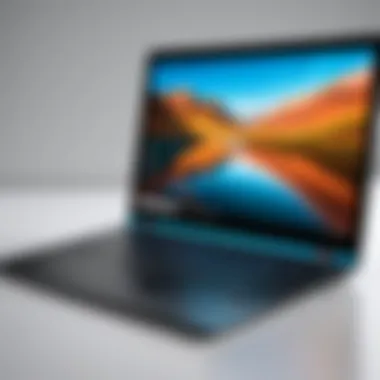
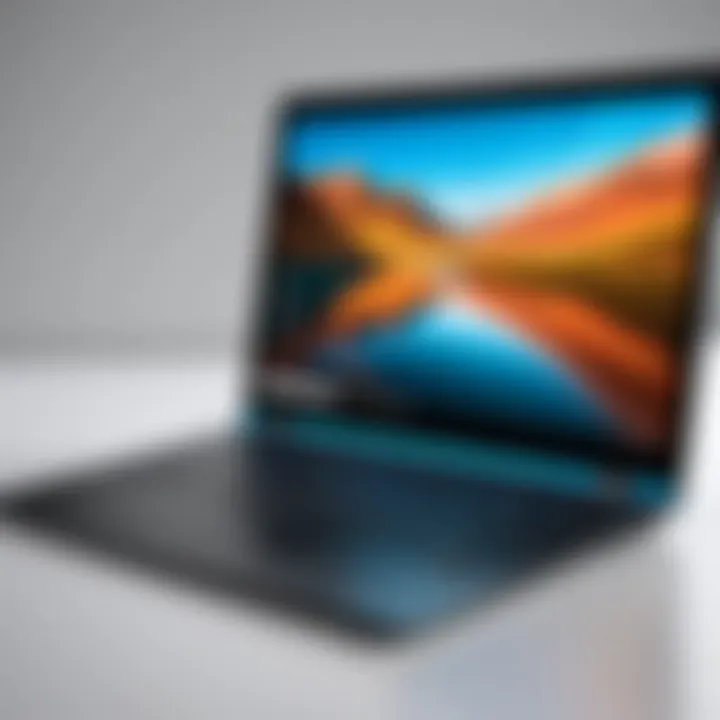
"Before diving in, understanding your Chromebook's hardware is crucial. Neglecting this could lead to a frustrating experience."
Considerations for Installation
Deciding to install Windows 10 on a Chromebook comes with several considerations beyond hardware compatibility. It’s not just about whether it’s possible, but whether it’s worth the effort. Here are several critical factors to weigh:
- Backup Your Data: Before making any significant changes, it’s paramount to back up your data. An installation process, especially one involving operating system changes, can lead to data loss if things go awry.
- Alternate Solutions: Consider whether you might achieve your objectives through alternative solutions. Tools like Crouton allow users to run Linux alongside the Chrome OS, offering more flexibility while avoiding the complications tied to Windows installation.
- Warranty Implications: Check on your warranty status before proceeding. Installing a new OS may void the warranty off many Chromebook devices.
- Learning Curve: Installing a new operating system can be a wave of challenges. Expect a learning curve while grappling with new interfaces, and possibly troubleshooting hardware issues that could arise post-installation.
- Performance Expectations: It’s crucial to set realistic performance expectations. Running Windows on a device not originally designed for it can lead to sluggish performance, diminishing the experience of using the operating system to its fullest potential.
In summary, embracing the journey of installing Windows 10 on a Chromebook is not taken lightly. With a solid understanding of the challenges and considerations that accompany this task, you can better equip yourself for whatever comes next.
Prerequisites for Installation
When it comes to installing an operating system, especially one as robust as Windows 10, knowing the right prerequisites is crucial. This section is not there just for checking boxes; it acts as a roadmap to guarantee a smooth transition from Chrome OS to Windows 10 on a Chromebook. There are a few elements that one should consider before diving headfirst into this installation process.
System Requirements
Before initiating any install, it’s vital to have a clear understanding of the hardware and software requirements for Windows 10. (Don’t skimp on this step!) Here are the core aspects to keep in mind:
- Processor: A 1 GHz processor or faster with at least two cores on a compatible 64-bit processor.
- RAM: At least 2 GB of RAM, although 4 GB or more is advisable for optimal performance.
- Storage: A minimum of 20 GB of free hard drive space is necessary for installation. More is always better if you plan to install additional software later on.
- Graphics Card: DirectX 9 or later with a WDDM 1.0 driver.
- UEFI Firmware: Most Chromebooks come with UEFI firmware which is compatible with Windows installations but it’s worth a check.
Not every Chromebook will meet these requirements. Many models, designed primarily for lightweight tasks, might struggle or flat-out fail to handle Windows 10 effectively. Always refer to your specific model’s documentation to assess whether it’s ready for such a heavy lift.
Backup Important Data
One cannot simply overstate the importance of data backup. Imagine losing all those cherished photos, important work documents, or bookmarks just because you jumped into the installation. Before making any drastic changes to your system, ensure you back up your data effectively. Here are some helpful tips:
- Cloud Storage: Use Google Drive or Dropbox to secure your essential files online. It's straightforward and ensures you'll have access later.
- External Drives: Transferring files to an external USB drive is another safe route. It keeps files offline and away from prying eyes.
- Chromebook Backup Feature: Don’t forget that Chromebooks also come with built-in options for backing up files, which you can utilize.
By taking these precautions, you’re not only safeguarding your data but also improving your peace of mind while proceeding with the installation. The stakes are too high to ignore these fundamental steps.
"An ounce of prevention is worth a pound of cure" - This age-old saying rings especially true when it comes to tech installations.
In summary, before installing Windows 10 on your Chromebook, thoroughly assessing your device's specifications and backing up invaluable data is key. This groundwork paves the way for a hassle-free installation experience that doesn’t hold surprises in store.
Methods of Installation
The installation of Windows 10 on a Chromebook is not a run-of-the-mill undertaking. It requires careful thought and understanding of various methods available for installation. Each method brings its own set of benefits and considerations that are pivotal in achieving a successful transition from Chrome OS to Windows 10. This section delves into three prominent methods: installing via Crouton, utilizing a virtual machine, and creating a bootable USB drive. These methods are tailored for different user needs and technical expertise, giving you the flexibility to choose what suits your situation best.
Installing via Crouton
Process Overview
Installing Windows 10 via Crouton involves creating a dual-boot environment where you can run both Chrome OS and Windows alongside each other. The primary advantage of this method is that it allows access to the Chrome OS features while leveraging the robust capabilities of Windows 10. In the grand scheme of installation options, Crouton stands out due to its lightweight profile and user-friendly process. Unlike other methods, it doesn’t necessitate intricate command line operations for the most part, making it a favored choice among many.
However, it does have unique attributes that may not suit everyone. For example, while Crouton is effective in creating a convenient layer for various tasks, it might lead to some performance limitations, especially when heavy Windows applications are in use. Moreover, certain hardware features like custom drivers may not function at their full potential. Nonetheless, its ability to switch seamlessly between operating systems is undeniably appealing.
Advantages and Disadvantages
The advantages of utilizing Crouton are significant. First, you retain the original Chrome OS during the process, which means you can switch back at any moment without losing your settings. This duality is a strong argument for many users who value flexibility. Additionally, Crouton is relatively straightforward to set up for someone with basic technical knowledge.
However, on the flip side, the performance issues mentioned earlier could become a headache if you plan to run resource-intensive applications. Furthermore, since it operates in a chrooted environment, certain system-level features may not be fully operational. These mixed experiences can lead to frustration depending on the user's expectations and technical prowess.
Using a Virtual Machine
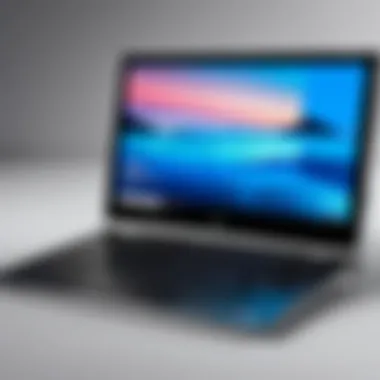
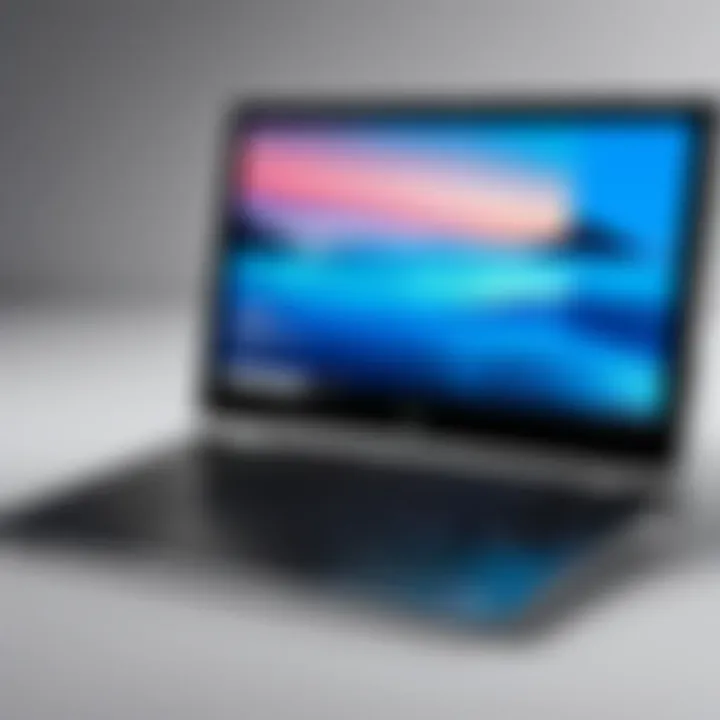
Setup
Setting up a virtual machine (VM) is another popular method for installing Windows 10 on a Chromebook. It allows Windows to run as a guest operating system within the existing Chrome OS environment. This strategy is notably beneficial because it doesn’t alter the native operating system, providing a kind of safety net for users who fear system corruption. Moreover, modern Chromebook models typically have enough hardware capabilities—especially RAM and processing power—to support virtualization effectively.
In terms of VM setup, software like VirtualBox or VMWare can be utilized. These tools provide graphical interfaces that simplify the setup and management processes. There is a notable flexibility with VM configurations, letting users allocate resource amounts as needed, directly affecting Windows performance.
Performance Considerations
While the VM approach has great appeal, it’s essential to weigh performance considerations seriously. Running Windows in a virtualized environment can lead to slower operations compared to native installations. Programs that demand higher graphics processing or heavy CPU usage may run into bottlenecks, creating a less than ideal user experience. This is particularly true for older Chromebook models with limited hardware capabilities.
"Virtual machines offer an interesting workaround, but efficiency often takes a back seat."
Additionally, the interactions between Chrome OS and the Windows VM may not be as smooth as standalone installations, where functionalities like drag-and-drop file transfers might become cumbersome or fully unsupported. If you are looking to run Windows for quick tasks or testing, this might suit your needs, but for extensive usage, you may encounter a few hiccups.
Creating a Bootable USB Drive
Tools Required
Creating a bootable USB drive to install Windows 10 directly onto a Chromebook is perhaps the most direct approach. This method gives users complete control over the installation process, akin to a regular PC installation. To get this rolling, specific tools are necessary. Software such as Rufus or the Windows ISO Download Tool will be invaluable as they facilitate the creation of the bootable USB. Furthermore, you will need a reliable USB drive with a considerable storage capacity to house the Windows installation files.
Another characteristic of this option is that it embraces traditional installation protocols seen on standard laptops and desktop computers. This familiarity can be comforting for tech enthusiasts accustomed to such processes.
Step-by-Step Guide
A well-structured step-by-step guide is essential in successfully creating a bootable USB drive. The process begins with downloading the Windows 10 ISO file from Microsoft's official site, ensuring you have the right version that your Chromebook can support.
Next, the selected USB creation tool is used, where you will select the downloaded ISO file and the target USB drive. As a finishing touch, adjustments regarding filesystem settings and partition schemes must be made, giving you a smoothly running installation medium.
Once the USB drive is prepared, rebooting the Chromebook while holding down specific keys can help access the boot menu. Selecting the USB drive from this menu should initiate the installation process of Windows 10.
In summary, creating a bootable USB is specific and leads to a fully functional installation of Windows 10. It does, however, demand a bit more technical expertise than other methods, making it potentially intimidating for those less experienced. Careful consideration of these various methods is key to achieving a successful installation of Windows on your Chromebook.
Challenges and Limitations
Navigating the installation of Windows 10 on a Chromebook is hardly a walk in the park. It comes with its own set of challenges and limitations that aren't small potatoes. Understanding these factors is crucial for anyone considering such a project. Not only do they impact the viability of the installation, but they also influence the overall performance of the operating system on hardware that wasn’t initially designed for it. \n\nWhen discussing challenges and limitations, we must consider both hardware compatibility and system stability. Each aspect plays a significant role in determining how smoothly this installation can go. The goal here is to equip tech enthusiasts and IT professionals with an insightful grasp of what to expect and how to prepare for potential hurdles.
Hardware Compatibility
Drivers and Support
One of the primary concerns when installing Windows 10 on a Chromebook is driver support. Chromebooks typically operate using a Linux kernel, and the underlying hardware may lack the necessary drivers for Windows. This mismatch can lead to functionality issues where essential components like the keyboard, trackpad, or even the Wi-Fi adapter don't operate as intended.
\nMoreover, the key characteristic of driver support is its variability based on the specific Chromebook model. Despite this being a common hurdle, there are communities online where users share custom drivers that can sometimes provide the missing links. The contribution of these support frameworks to the overall theme of this process cannot be overstated. \n\nHowever, using custom drivers comes with its own unique features and potential pitfalls. While they can enable hardware functions that would otherwise be unavailable, they require frequent maintenance and updates. The advantage here is increased functionality, but the disadvantage is the risk of system instability that may arise from unverified sources.
Performance Issues
Another significant aspect to scrutinize is performance issues. Running Windows 10 on a device not originally designed for it can yield sluggish performance. Older Chromebooks, especially those with lower spec hardware, may struggle under the weight of this heavier operating system. The key characteristic here is that system resource allocation becomes extremely important. \n\nWindows tends to hog system resources, and without adequate RAM or processing power, users may find the experience akin to driving a sports car on a bumpy gravel road—frustrating at best. \n\nOne of the unique features of addressing performance issues is the potential for thrifty configurations. Users might lower graphical settings or disable various Windows features to improve speed. Yet, this approach often leads to a sacrifice in the user experience, as visual elements that add to usability might get dropped. In this hustle between preserving resources and maintaining functionality, one must tread carefully: the marginal gains can sometimes come at a steep cost.
System Stability
When it comes to system stability, the stakes get even higher. Running an unoptimized version of Windows on incompatible hardware can result in crash after crash. This issue is particularly relevant for productivity-focused users who need their devices to perform reliably. \n\nTo sum up, the challenges and limitations surrounding the installation of Windows 10 on a Chromebook are not insignifcant. Potential users need to weigh the pros and cons carefully. Engaging with real experiences shared across forums and community sites like Reddit can shed light on effective solutions while also preparing for possible challenges. Remember, it's not just about installing the system, but about maintaining a functional computing environment that adds value to your work.
Alternative Solutions
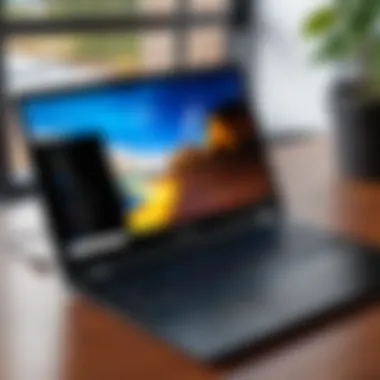
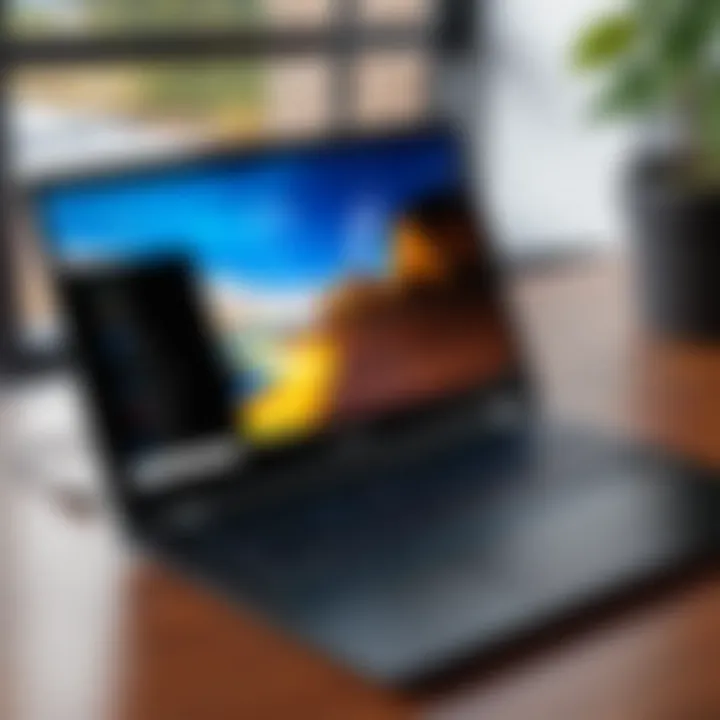
Exploring the installation of Windows 10 on a Chromebook often leads to a series of questions about the viability of such a venture. However, it pays to step back and assess the broader landscape of alternatives. Alternative solutions offer both flexibility and practicality for users who are not keen on navigating the complexities of a full Windows installation on hardware not designed primarily for it. This is crucial for maximizing the utility of a Chromebook while minimizing potential hassles related to compatibility and performance.
In considering alternatives, we can focus on two primary options: Linux operating systems and cloud-based Windows solutions. Each comes with unique benefits and potential downsides that cater to varying user needs. For example, both approaches can mitigate the hardware limitations found in many Chromebooks, ultimately extending their lifespan and capabilities beyond the standard Chrome OS experience.
Using Linux as an Alternative
Linux stands out as a favorable choice for Chromebook users seeking to expand their computing capabilities beyond the confines of Chrome OS. With a wide array of distributions available, Linux offers the type of customizable environment that can be suited to individual user preferences and requirements.
Here are some highlights:
- User-friendly options: Distros like Ubuntu and Mint offer a familiar interface that eases the transition for Windows users. You won't be left fumbling in the dark.
- Performance: Often, Linux distributions are lighter and can run smoother on devices with limited resources, which is a game-changer for Chromebooks. This translates to quicker boot times and less lag during operation.
- Open-source community support: Being open-source means there’s a vast community ready to assist with troubleshooting and improving the software, making it a robust option for tech-savvy users.
However, switching to Linux isn’t without drawbacks. Some specialized software that users may rely on can find itself incompatible, depending on the distro chosen. Furthermore, there may be a learning curve for those unaccustomed to Linux systems. Despite these concerns, for many, Linux serves as a practical bridge to a more personalized computing experience on Chromebook hardware.
Cloud-based Windows Solutions
As technology progresses, cloud solutions have started to revolutionize how we interact with operating systems. This path allows Chromebook users to tap into the Windows experience without the complications of direct installation.
Utilizing services like Microsoft Azure or Amazon WorkSpaces introduces the idea of a virtual desktop environment. Here’s why it can be an appealing route:
- Accessibility: Users can access Windows applications from anywhere, as long as they have internet connectivity. You can work from your couch today, and from the coffee shop tomorrow without missing a beat.
- Reduced local resource usage: Running Windows in the cloud means the heavy lifting is done on powerful remote servers. This keeps your Chromebook fast and responsive since it doesn’t have to handle demanding software.
- Simplicity: Setting up a cloud-based Windows environment generally involves minimal steps, allowing users with varying degrees of technical expertise to get started quickly.
Nevertheless, a steady internet connection is paramount. Without it, users may face significant limitations, particularly in low-connectivity environments. Additionally, subscription costs can add up over time, contrasting with the generally free or inexpensive nature of the Linux solution.
In summary, the exploration of these alternative solutions underscores the need for usability and adaptability in navigating the world of Chromebooks. Each option presents unique benefits, and the ultimate choice largely depends on individual user needs and circumstances.
Performance Expectations
When diving into the potential of installing Windows 10 on a Chromebook, performance expectations play a crucial role in determining if the endeavor is worth the effort. Tech enthusiasts and IT professionals understand that the capabilities of any operating system greatly depend on the hardware it runs on. Understanding what to anticipate is vital because, let’s face it, no one wants to embark on a journey only to find that the destination is a bumpy ride.
User Experience Assessment
Assessing the user experience is a linchpin in evaluating the feasibility of running Windows 10 on a Chromebook. This involves gauging how well the system operates once installed. For a Windows 10 environment, performance hinges on several factors:
- Responsiveness: Users expect a smooth experience, so the responsiveness of apps is paramount. Will the operating system load within a reasonable time?
- Stability: Crashing or freezing during key operations can frustrate users. Assessing the stability of Windows on various Chromebooks is crucial. Factors like driver compatibility directly influence this.
- Resource Allocation: Windows tends to be more resource-hungry than Chrome OS. Understanding how a Chromebook's hardware handles this – especially if it has limited RAM or processing power – can inform user expectations. Anecdotal reports suggest that models with Intel processors fare better compared to ARM-based devices.
- Boot Times: Realizing what boot times to expect is another indicator. Does it boot as swiftly as Chrome OS? Initial experiences may highlight sluggish performance.
In a nutshell, the user experience isn’t just limited to how snappy things feel. It incorporates a broader landscape of interactions and perceptions that collectively define satisfaction. If users are ill-prepared for a system that limits their activities, frustration might ensue.
Performance Metrics to Consider
Diving deeper, keeping an eye on performance metrics is essential for clear evaluation. Here’s what experts might focus on:
- CPU Performance: The speed and efficiency of the processor dictate how well the system runs. Benchmarks can help give insight into expected performance against the metrics set by Windows 10 requirements.
- Memory Usage: Tracking the RAM consumption can reveal how demanding Windows 10 is on the Chromebook's resources. A system bogged down by memory leaks or excessive usage can lead to noticeable lag.
- Disk I/O Performance: The speed at which data is read and written also plays into the experience—especially when running applications from disk. A solid-state drive can significantly improve this metric.
- Battery Life: The energy consumption of Windows 10 will impact the Chromebook’s battery life. Users on the go often rely on longer battery life, which can dwindle under the heavier load of Windows.
“Performance expectations often lead to disappointment if not managed properly. Clear metrics provide a buffer against unrealistic anticipations.”
Ultimately, integrating these performance metrics with a personal user experience assessment can create a well-rounded picture of what users may expect. Thus, potential candidates for installation must carefully consider their Chromebook's specifications to set realistic expectations about their Windows 10 experience.
Finale and Recommendations
As we wrap up this comprehensive guide on installing Windows 10 on a Chromebook, it's crucial to reflect on the insights gained throughout the article. The venture into installing a different operating system on a Chromebook can be as rewarding as it is challenging. Understanding the implications of this transition is key for IT professionals and tech enthusiasts alike.
Final Thoughts
Diving into the world of Windows 10 on non-traditional hardware like a Chromebook isn't just a technical challenge; it's a blend of exploration and adaptation. Throughout our exploration, we uncovered numerous factors that one must consider. The ability to harness the power of Windows applications on a lightweight device offers a level of versatility not typically found in the realm of dedicated Chromebooks. Yet, this freedom comes with a caveat—the necessity to navigate compatibility and performance issues. The final takeaway? Be prepared and informed, as these installations can sometimes feel like navigating through a minefield of hurdles.
Best Practices for a Smooth Installation
To ensure your journey into Windows 10 is seamless rather than stressful, follow these best practices:
- Choose the Right Chromebook: Not all Chromebooks are created equal. Before starting the installation, check compatibility through resources like Wikipedia or forums on Reddit.
- Create a Reliable Backup: Always back up your significant data. The transition can create unexpected issues that might lead to data loss. Backing up ensures peace of mind.
- Utilize Recommended Tools: If you're following a method such as Crouton or creating a bootable USB drive, use recommended tools and precise guides. Using the right tools can save you from unnecessary headaches.
- Research Drivers: After installation, make sure to seek out and install compatible drivers for your hardware. This can significantly affect performance and usability.
- Be Patient: Installation processes can differ greatly. Allow for trial and error, and don’t rush through the steps. A little patience can go a long way in avoiding critical errors.
Following these recommendations, you'll be better equipped to navigate the installation of Windows 10 on your Chromebook. Remember, this isn't merely about switching operating systems; it's about exploring new possibilities in the tech realm. Keeping yourself informed, prepared, and adaptable is essential to making the most of this transition.



